°Arcus°
Home » Atlantis » The characters in the Timaeus and Critias and transmission of the Atlantis myth
THE CHARACTERS IN THE TIMAEUS AND CRITIAS AND TRANSMISSION OF THE ATLANTIS MYTH
WHEN DID THE ATLANTIS DISCUSSION TAKE PLACE?
The Timaeus and Critias were among the latest of Plato's dialogues, written in about 360 BC.
The late Slobodan Dušanić provides a plausible scenario for their composition in response to the crises facing Athens at a slightly later time of 356-355, namely the Social War (in which Athens' "allies" in the Second Athenian Confederacy rebelled) and the Sacred War (fought over the famous shrine at Delphi).
In particular, the impeachment of Plato's associate Timotheus during the period likely gave rise to the use of Critias, with his fondness for legal terminology, as a narrator.
In terms of the date of the festival at which the dialogues are set, the most commonly-argued date is at a festival in honour of Athena, commonly identified as the Panathenaea, in around 421 BC, with Zdravko Planinc a notable dissident, suggesting instead a setting at the Plynteria of 407 BC, with the participants eagerly awaiting the return of Socrates' and Critias' ally Alcibiades, himself a former intimate of Socrates.
TRANSMISSION OF THE ATLANTIS MYTH
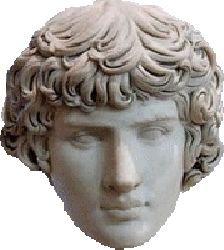
WHO IS CRITIAS?
Simply put, the Critias of the dialogues is to be understood as a character summoned by Plato for his own use. In my view, however, the most likely figure for Plato to base the Critias of the narrative upon was an Athenian relative of Plato's of this name who waxed mighty during the Spartan-imposed oligarchy which briefly snuffed out the Athenian democracy after the Peloponnesian War. This oligarchy ruled during 404 and 403 BC.
CRITIAS THE OLIGARCH: A BRIEF BIOGRAPHY
"CRITIAS III"
Modern scholars dealing with the career of the Athenian lawgiver Solon have pinpointed the date at which he was active to some point in the 590s. This has led to a rejection of the traditional view that the Critias who narrates the story of Atlantis was the Athenian oligarch of 404-403 BC - who was regarded as the grandson of Critias the son of Dropides, for example, by Diogenes Laërtius in his biography of Plato [3.1] - and a suggestion that two generations have dropped out, meaning that the grandson of Critias the son of Dropides (often referred to as Critias II) was the grandfather of the oligarch (Critias IV).
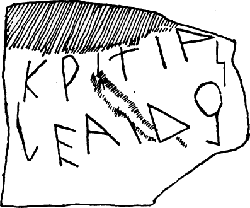
Furthermore, some external evidence of the existence of this "Critias III" has been found in the form of pottery shards dating to the 480s, which mention a certain "Critias son of Leaïdes" as a candidate to be expelled from Athens, most likely for his real or perceived anti-democratic sympathies.
But how likely is it that an obscure character such as this, who was forgotten by Diogenes' day, should be seen as a more plausible candidate for Plato's character? Is this just an attempt to reconcile the dialogues with a chronological scheme to which Plato may not have subscribed?
THE "TRUE" NARRATOR OF THE ATLANTIS TALE: PLATO OR CRITIAS?
There are a number of occasions in the Timaeus and Critias when the truth of the account of Athens and Atlantis is stressed. On all but one of these occasions, the speaker making the claim is Critias, who also narrates the story. Indeed, so adamant is Critias that what he is saying is a true recollection of the story told to his predecessor Solon by the Egyptian priests that even so great an authority as Plato's mentor Socrates is prepared to suspend his disbelief [Tim. 26e].
The big question is... should we take Critias' claims at face value?
CRITIAS' SHORTCOMINGS AS A NARRATOR
As a narrator - at least in the incomplete text of the Critias which has survived - Critias falls short of his stated purpose, which is to show Socrates' ideal city in a state of war. A few references to wars between those on either side of the Pillars of Heracles and Athens' position of leadership among the Greeks, as well as their heroic last stand when abandoned by their allies aside, there is no real sense of Athens in battle or of the ebb and flow of the war. No pitched battles are described in any detail. Rather, Critias appears to get lost, enamoured as he appears to be with his description of Atlantis and the goings-on therein. He is also highly unreliable, contradicting himself on a number of occasions: -
Another important point to consider is the depiction of Critias is consistent with his being a sophist, a group of lawyer-orators for whom Plato had little time. The infamous Critias of 404-403 BC was so well-known for both speechmaking and the writing of constitutions that, some centuries later, John Philoponus, citing a certain Alexander, felt the need to mention a tradition which held that there were two men by this name: he suggests that the non-political writings of Critias were the work of a different man by the name, with the member of the Thirty only authoring "the Well-balanced Constitutions" (On Aristotle's On the Soul [89.8 = BNJ 338a T 16]) - this latter interest being perhaps best attested the Platonic dialogue which bears his name.
WHO IS SOLON?
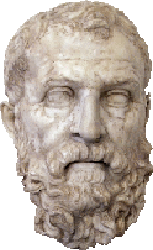
Solon was one of archaic Athens' most prominent political figures, and is generally held to have lived between c.638 and c.558 BC. He was born on the island of Salamis, the son of Execstides, reputed to be a descendant of Codrus, Athens' tragic last king. His mother was remembered as being a cousin of an early associate, Pisistratus, who later became tyrant.
Despite being an aristocrat, Execstides was a man of only moderate means, and Solon himself eked out a career as a merchant. During this period, Solon's birthplace was the subject of a drawn-out dispute between Athens and Megara. Diogenes explains that, after a series of reverses, the Athenian government made espousal of a renewal in the fighting a capital crime, whereupon Solon, with the support of Pisistratus, coaxed the Athenians into an action which would gain control of the strategic island. Pausanias also credits Solon with the stratagem which defeated the rebel city of Kirrha during the First Sacred War [10.37.6-7], though this is a late and almost certainly spurious tradition, with the original deviser of the stratagem being Nebros, an ancestor of the physician Hippocrates.
Solon's greatest achievement was the redefinition of Athenian law, after which he left Athens, ostensibly for a decade, to travel to Egypt, Cyprus and Lydia. On his return, Solon found Athens still in the grip of factional infighting between the pedeis ("plainsmen") and paralioi ("men of the coast"), led by Lycurgus son of Aristolaïdes and the Alcmaeonid Megacles respectively. A third party, the diakrioi or hyperakrioi ("hillmen"), led by Pisistratus, also emerged as a significant force and was composed of the poor of upland areas, as well as creditors whose debtors had had their debts cancelled by a reform of Solon's design. Solon returned only briefly to try to oppose Pisistratus' attempts at securing absolute power, but, proving unsuccessful, Solon went into self-imposed exile on Cyprus, where he died shortly afterwards.
DATING SOLON
The date of Solon's career is established by reference to a number of sources, foremost among them being the Athenian Constitution, which was written by the great philosopher Aristotle or one of his immediate disciples. This is the earliest extant document which furnishes an absolute chronology for the career of Solon: -
Some fine-tuning of these data and we arrive at T.J. Cadoux's date of 594/3 for the date of Solon's supposed archonship (with Dropides succeeding him in office in 593/2), with Solon's dating further constrained by a notice in the work of Phaenias of Eresus on the island of Lesbos, a man with close ties to the Lycaeum (Aristotle's school), who placed Solon's death during the archonship of Hegestratus, the year after Pisistratus first assumed power. Thus, if we follow Phaenias, Solon was dead by about 560 BC.
However, when we survey other sources on the career of Solon, things do not add up.
HERODOTUS ON SOLON'S TRAVELS
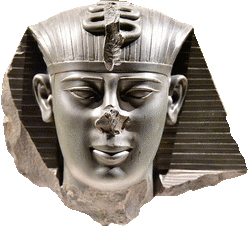
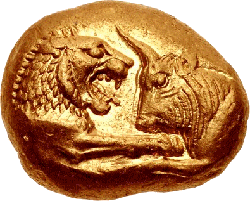
Around 425 BC, almost a century before the Athenian Constitution was being written up, the historian Herodotus was putting the final touches to his great work, which is our earliest extant source on Solon.
Herodotus associates the Athenian statesman with a number of major and minor figures from across the ancient Mediterranean: Amasis of Egypt; Croesus of Lydia; and the Cypriot Philocyprus.
These connections have major implications for Solon's date, particularly given the constrained nature of Herodotus' chronology during the period: -
PLUTARCH ON THE CHRONOGRAPHERS' DATE FOR SOLON
An interesting quote from the Middle Platonist Plutarch - who was no fan of Herodotus, being the man who, more than anyone, contributed to depiction of Herodotus as the "father of lies" - wrote a defence of Solon's encounter with Croesus as historical in his Life of Solon [27.1]: -
Clearly, the work of the chronographers - who emerged at around the same time as Herodotus, as seen in the works of man like Hippias of Elis (who produced a list of Olympic victors) and Hellanicus of Lesbos (who made use of a list of priestesses of Hera at Argos as a basis for reckoning relative dates), as well as the anonymous compilers of the Athenian list of archons from about 425 BC - was not universally accepted.
One major facet of this particular difficulty may well be explained by Herodotus' date for the beginning of the reign of Croesus (who is perhaps to be identified with the enigmatic Qλdãns who appears in various Lydian epigraphs): coins associated with him begin in about 575 BC, with some indications that he succeeded his father Alyattes as early as the 580s, which would place his early reign towards the end of Solon's ten-year voluntary exile in the "standard" chronology.
Nevertheless, the other difficulties remain in place, particularly when taking into account the work of Heracleides Ponticus.
HERACLEIDES PONTICUS ON SOLON & PISISTRATUS
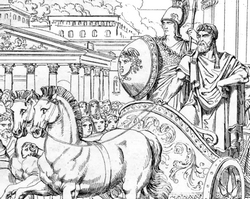
More pertinently, the work of Heracleides Ponticus, a Greek from Pontus in Anatolia, appears to have contained many references to Solon which suppose a date more in line with that of Herodotus than the chronology of Aristotle and Phaenias, potentially his colleagues at the Lycaeum. Heraclides, significantly, had earlier studied at Plato's school, the Academy, and left such an impression that, according to the much later Byzantine encyclopedia called the Suda, Plato left him in charge while he left for Sicily at about the time when he was writing the Timaeus and Critias.
Molly Miller, who worked on trying to find a solution to these discrepancies, highlighted a number of statements from later authors about Solon's career which she traced back (with varying degrees of confidence) to Heraclides: -
Given these data, transmitted as they were from Heraclides, a close associate of Plato, I would aver that it is not too great a stretch to suppose that these were well known at the Academy, perhaps even something like an "official position" on the matter.
PLATO ON CRITIAS, SOLON AND ANACREON
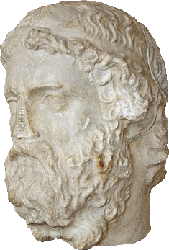
One last subject to consider is the dating of Anacreon's presence in Athens according to Plato. There is a reference in the Charmides to the family of Critias the son of Dropides being praised by Solon and Anacreon [157e], with Socrates flatteringly adding that the family's abilities marked them out as heirs to Solon [155a]. A scholar's note on verse 128 of the Prometheus Bound also mentions Anacreon's ardour for Critias as a reason for his appearance in Athens.
Now, given that Critias of the Thirty was born in about 460 BC, and was about ten when told of Atlantis by the elder Critias, whose age is estimated at about 90, Critias the son of Dropides would have been born in around 540 BC. Plato has Anacreon brought to Athens by Hipparchus, the "eldest and wisest of Pisistratus' sons" and a noted patron of the arts [Hipparchus 228c]. This could easily have occurred around the same time as Thespis was working, affording Anacreon the opportunity to cultivate a romantic relationship with the young Critias, say, during the 520s.
Thus, regardless of the actual date of Solon or the correct relationship between Critias the son of Dropides and Critias the son of Callaeschrus, I believe that the evidence from Plato and those associated with the Academy he founded is highly suggestive of a belief in a later, Herodotan dating for Solon's career, which leads me to conclude that the Critias of the dialogue is indeed intended as Critias the son of Callaeschrus.

WHO IS SOCRATES?
As is the case with many of Plato's other dialogues, the compère is his teacher Socrates. As Socrates left no body of written work, modern historians are reliant on the extant depictions of him in the Platonic corpus, as well as the work of the soldier-historian Xenophon (like Plato, writing retrospectively, though giving a markedly different portrait of the seminal philosopher), as well as allusions in the work of the comic playwright Aristophanes. Indeed, one of the major issues for academics focusing on the development of ancient Greek philosophy is the "Socratic problem," namely deciphering which of the opinions expressed by the character Socrates as depicted in Plato's dialogues are those of Socrates as opposed to Plato's own.
Socrates was born in around 470 or 469 BC in the Deme Alopece, the son of a Sophroniscus (who was perhaps a sculptor by trade, an occupation into which his son followed him) and Phaenarete. He had a half-brother, Patrocles, born to Phenarete, who remarried after Sophroniscus' death in about 450 BC. He married Xanthippe, who appears to have been of a higher social class to her husband, and had three sons - Lamprocles, Sophroniscus and Menexenus - who were likely still children at the time of their father's execution. He was a member of the tribe of the Antiochis. Socrates served in the Athenian military: Plato claims that Socrates participated in the battles of Potidaea, Amphipolis and Delium [Apology 28e].
Embarking on his philosophical career, Socrates developed a role as a μύωψ ("gadfly"), pricking the Athenian populace into action, "arousing, and urging and reproaching each one of you, constantly alighting upon you everywhere the whole day long" [Apology 30e-31a]. This Athenian gadfly attracted a wide retinue of followers from the Athenian elite and further afield. Diogenes lists seven of Socrates' most important students. Alongside Plato and Xenophon are Antisthenes and Aeschines of Athens, Euclid of Megara (who Plato visited at the age of twenty-eight), Aristippus from Cyrene and Phaedo of Elis. Alongside these seven, other noteworthy confederates were the mercurial Alcibiades, hero-cum-villain of the latter phase of the Peloponnesian War, as well as Critias the Oligarch. These last two associates caused many Athenians to become suspicious of Socrates, particularly after their part in the destruction of the herms in 415. In addition, several of Socrates' students founded philosophical schools of their own: Plato's Academy at Athens; the Megaran school; the Cyrenaics; and the Elean-Eretrian school. Additionally, Antisthenes is regarded as a founding father of the Cynics.
Socrates was also active in the political sphere: in the wake of the battle of Arginusae (406 BC), Socrates resisted popular demands for a collective trial of the victorious generals, who had neglected to pick up shipwrecked and deceased Athenian sailors in favour of pursuing the remainder of the defeated Spartan fleet, successfully resisting threats to block the impeachment of the generals until his presidency ended, gaining him the enmity of a number of powerful figures. During the reign of the Thirty Tyrants (404-403 BC), among whom Critias was prominent, he was condemned to death having refused to transport Leon of Salamis back to Athens for execution. Plato's Seventh Letter [324d-325a] states that one of the reasons for his parting company with the Thirty Tyrants - to whose rule he was originally amenable or at least neutral - was this attempt to have Socrates executed. Additionally, Diodorus Siculus [14.5.1-3] records an attempt by Socrates and two others to prevent the arrest of Theramenes, who had protested the heavy-handed nature of the rule of the Thirty. He eventually met his end in 399 BC for "refusing to recognise the gods acknowledged by the state, and importing strange divinities of his own" (presumably in reference to his personal tutelary daemon), and "corrupting the young." Both Plato and Xenophon depict the great philosopher's last days. Despite the pleas of his supporters, Socrates refused to countenance escape, instead accepting his fate. He died by hemlock poisoning. Robin Waterfield suggests that, from a reference in Plato's Crito, it is possible to infer that Socrates saw himself as a scapegoat whose death would cure the ills which had beset Athens.
In his Clouds, the comic playwright Aristophanes parodies Socrates as an argumentative idler, introduced sitting in a basket suspended in mid-air, "so that my rarefied mind can fuse with the rarefied ether," worshipping clouds in lieu of the gods and instructing his students in the ways of avoiding having to part with cash. Though by no means meant to reflect reality, Aristophanes does supply a number of details which seem to correlate well with Plato's own depiction of Socrates. He has an interest in musical tunings, develops tripartite systems - and there are even echoes of Socrates' homoerotic suggestions in the Charmides (though parodied to the point of absurdity) in his insistence that Strepsiades enter the "Think Tank" naked, as some sort of initiation. Socrates is also lampooned in the Birds [1280-1283, 1553-1555] and the Frogs [1491].
WHO ARE TIMAEUS AND HERMOCRATES?
WHAT ABOUT AMYNANDER?
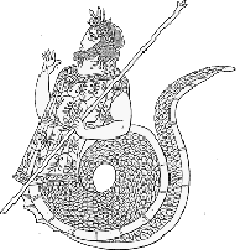
In historical Athens, the cult of Cecrops was served by a family of Eupatrids, the Amynandridae, who took their name from their eponymous founder, an obscure figure by the name of Amynander. Thus, the inclusion of an Amynander, seemingly so casually, in the account represents an invocation of the very foundations of Athenian society, reiterating what Critias has to say at the Apaturia. It is thus highly meaningful that a boy by this name appears alongside the younger Critias at the Apaturia, where he presses the elder Critias for more information on Solon's poem about Atlantis, as well as espousing Solon's poetic talent [Tim. 21bd]. The name Amynander is somewhat obscure, with the only historical character bearing it being a king of the hemibarbarian Athamanians (also known as Amynas by Polybius [Histories 4.16]), attested in the works of Strabo [9.4.11], who details his activities in northern Greece during the early 2nd century BC. The name comes from the Greek word ἀμύνω meaning "to keep off, ward off" or "to fight for/in defence of a" (used in the latter sense by Plato's contemporary Xenophon [On Hunting 9.9]), which means that the name of this minor figure in the Timaeus may have been included as a cypher for the redoubtable nature of the paleo-Athenians' upper class and their exploits in the defence against the Atlantean forces.
WAS PLATO PRESENT WHEN ATLANTIS WAS DISCUSSED?
Well, notwithstanding the fact that Plato is writing a philosophical dialogue and not an account of something that happened to him decades previously, this question certainly deserves an answer.
The only real potential clue is the identity of the fifth participant, who was indisposed due to illness and did not attend the discussion [Tim. 17a]. This may be a reference to Plato: Plato's non-appearance at the deathbed of Socrates is explained as being due to illness according to the title character in the Phaedo [59b]. Other than that, the chronology presents various difficulties. Plato's birth is usually placed in 428/7 BC, which would make him a child at the time of the discussion if the 421 date is used. If Planinc's alternative is preferred, it is, of course, possible, as Plato was very likely a member of Socrates' circle by that date. However, Debra Nails suggests that Plato was born as late as 424/3 BC, which would render even this date difficult.
